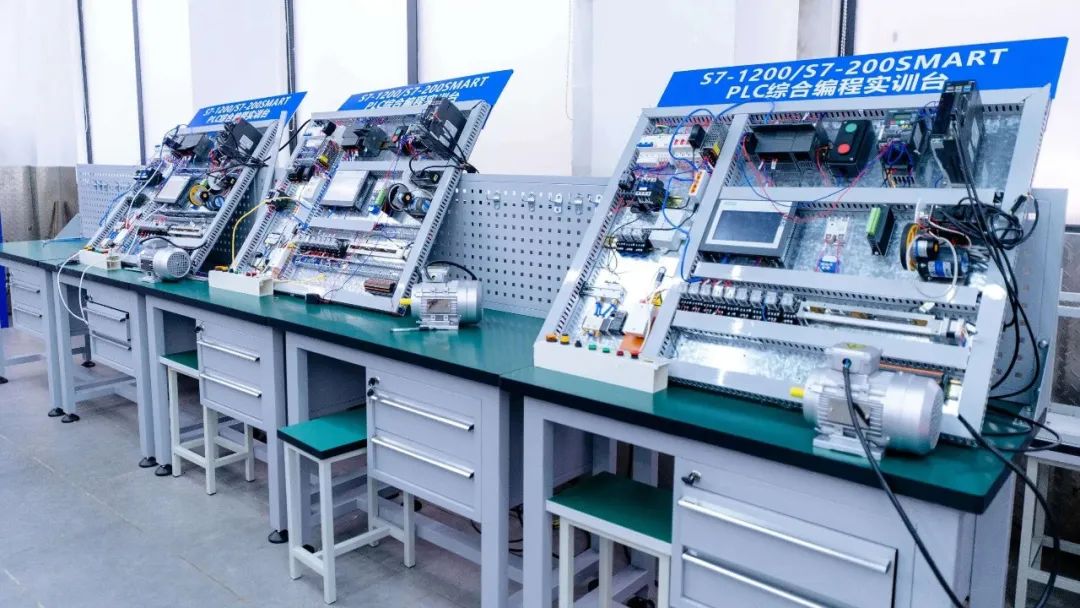
Hello everyone, I am Da Yi! Today, we will discuss the similarities and differences between microcontroller programming environments and PLC programming software. From a practical perspective, microcontrollers are generally programmed using C language and require an Integrated Development Environment (IDE) such as Keil or IAR. In contrast, PLCs have dedicated programming software, with mainstream options including Siemens’ STEP 7 and Mitsubishi’s GX Works, which allow programming through drag-and-drop ladder diagram symbols.
Main Components of Microcontroller IDE:
- Editor: for writing code
- Compiler: converts C code into machine code
- Programming Tool: downloads machine code to the microcontroller
- Simulator: simulates microcontroller operation on a PC
Main Functions of PLC Programming Software:
- Ladder Diagram Editor
- Data Block Editor
- Hardware Configuration
- Communication Settings
- Online Monitoring and Diagnostics
Main Differences:
- Programming Method: Microcontrollers use text-based code, while PLCs use graphical programming. The code is relatively abstract, whereas ladder diagrams are more intuitive, resembling switches and circuit connections.
- Resource Management: Microcontrollers require manual management of memory and peripheral resources, necessitating developers to code themselves. PLCs, on the other hand, automate resource allocation, with the system managing it for you.
- Programming Difficulty: Generally, microcontroller programming has a higher entry barrier, requiring a foundational understanding of C language. PLC operations are more intuitive, but there are many specialized concepts to grasp.
- Portability: Microcontroller code is often tailored to specific models, making it inconvenient to port to new hardware. PLC software has better hardware support; if the manufacturer’s chip changes, the software is updated accordingly.
- Flexibility: Microcontroller code is highly customizable; as long as developers code, the functionality is flexible and easy to extend. PLC functions are generally confined within the accompanying software framework.
Comparison of Advantages and Disadvantages:
Advantages of Microcontrollers:
- Low power consumption and high portability
- Low hardware costs
- Flexible and controllable, with expandable functionality
- Rich open-source resources
Disadvantages of Microcontrollers:
- Long development cycles
- Complex debugging, with resource management needing to be self-managed
- High porting costs
- Limited application scenarios
Advantages of PLCs:
- Industrial-grade reliability
- Standardized programming methods, maintainable by multiple people
- Integrated hardware support, ready to use out of the box
- Probe diagnostics, simple fault handling
Disadvantages of PLCs:
- Relatively large size
- Higher hardware costs
- Functionality is locked
- Inconvenient for secondary development
In summary, microcontrollers are more focused on low-level and embedded development, while PLCs are specialized devices for industrial control. The choice between the two depends on actual needs and scenarios. For small batch customized products, microcontrollers may be preferred; for large-scale deployment in industrial environments, PLCs are generally more reliable.
To summarize, there are many differences between the programming environments of microcontrollers and PLCs, from programming methods to software and hardware resource management. However, their goal is to complete automated control tasks, differing only in focus and application scenarios. We will continue to expand on these two topics in future content, and if you have any questions, feel free to ask!
That’s all for today’s learning session! I hope you have a general impression of the differences between microcontroller and PLC programming environments. In the future, I will continue to create more professional and detailed tutorial videos on these two directions, guiding everyone through practical operations. To reinforce your memory, you can compare the programming software of different PLC manufacturers to experience their similarities and differences. For microcontrollers, you can also look online to see how popular IDEs are used. If it becomes too complex, don’t push yourself too hard; just keep up with the course pace. The journey of programming is long and arduous, but with continuous learning, you will eventually master it! Alright, that’s it for today, see you next time!